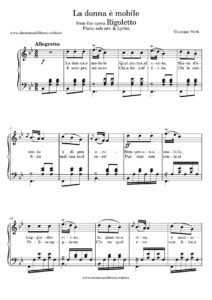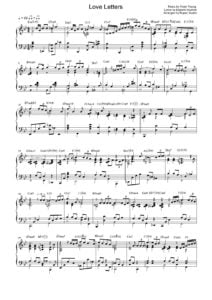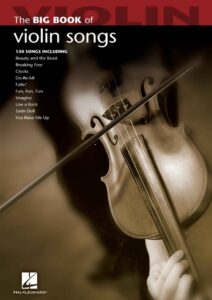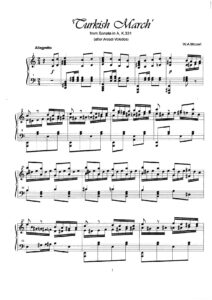GYÖRGY LIGETI : Musica ricercata & 6 Bagatelles for wind quintet (1951-55) –
The search for a language of his own in the shadow of Bartók.
György Ligeti comes from Transylvania, his birthplace has belonged to Romania since the post-war period, but he is Hungarian from a Jewish family. After the war, which he was lucky to survive (apart from his mother, his family died in a concentration camp), he began to study music
to Budapest.
In the short phase before Hungary was subjugated by Stalinism, there was a culturally open climate in which the young composer must have absorbed all the latest trends like a sponge. However, after that (from 1946), just like in the USSR, the culture was regulated and suppressed. Musically, a simple, real-socialist style was required. Even by the acknowledged greatest Hungarian composer, Béla Bartók, only a few pieces were performed, mostly folk music arrangements.

The young Ligeti outwardly followed these guidelines, but in reality he was looking for a new style in which harmony and the passage of time were largely eliminated. The pieces on this way could only be created for the drawer. For example the ‘Musica ricercata’ for piano. The title is a reference to the ricercar, the early baroque form of the fugue (e.g. in Girolamo Frescobaldi, to whom the 11th piece refers), but also aptly means “searching music” in German.
Hoping to have his music performed, Ligeti arranged 6 pieces from this 11-part cycle as the Bagatelles for wind quintet. But even then, the 6th Bagatelle was rejected on the grounds that there were too many small seconds – the judgments on new musical works were so superficial. Since the score was left behind when they fled to the West, Ligeti reconstructed the instrumentation for a Swedish wind quintet for the overall premiere in 1969.
In this version, the work became a classic hit of the 20th century: wind quintets are hungry for good pieces and – when have you ever seen such a catchy work by a notorious avant-gardist? It is often forgotten that there is an original work (the ’10 pieces for wind quintet’) from the 1960s (i.e. Ligeti’s demanding micropolyphonic period), but it is never the same could achieve popularity.
But despite the relatively traditional, Bartók-like tonal language, Musica ricercata/ Bagatelles shows many aspects that are consistently typical of Ligeti’s work.
- Form progression: Ligeti prefers processual to developing forms (in contrast to Bartók). That means: Form (and harmony) appear without contrasts or even statically (see also point ‘Rules of the game’). Musical parameters flow in straight lines transitions into one another instead of developing into spin-offs or spin-offs. The simplest example: the first piece of the Musica ricercata on the one note A is in principle a process of speeding up, achieved through real accelerando and process-related shortening of the basic rhythmic motif up to the five-eighth-long figure from Prestissimo.
2. Rhythm: This technique already shows Ligeti’s preferred relationship to rhythm and meter: bar lines stand for coordination, but not in the sense of a metric emphasis. Even in the Musica ricercata there are numerous passages where rhythmic processes are composed across bars. The successive quintuplets, sextuplets, septuplets, etc. are then composed as an accelerando. In later works, this can also be found as a micropolyphonic obfuscation in different values at the same time.
3. Intervals: In many pieces, the melodic line prefers a small ambitus (most frequently the minor third), which is filled out in small intervals. On the other hand, there are eruptions at large intervals. These sudden gestures also become typical of later works, where there are repeated crashes and breakouts – either as expressive interruptions in the process or as end or turning points. In the piano version there are already spoken, programmatic playing instructions such as ‘ferocissimo (very wild)’, ‘minaccioso (threatening)’, ‘like in a panic’, ‘insisting, defiant’, ‘like crazy’. In the wind version, these are almost all reduced or transformed into relatively neutral Italian playing instructions (a sign of the sober avant-garde years?), but this does not soften the extreme expression.
4. Rules of the game: This term does not quite belong in this series, but perhaps best describes Ligeti’s approach to composing. In part, this attitude can already be found in Bartók (see my analysis of “Music for Stringed Instruments, Percussion and Celesta”): simple basic requirements create complex compositional connections. Let’s think of simple board games: a few rules and clear game goals (e.g. mill and checkers) always create different and complex game processes. This is also the case in the Musica ricercata: the basic rules of the game are kept extremely simple. The eleven pieces each have an increasing range of notes: from two notes in the first to all twelve in the last (although the idea of introducing the new note towards the end of the piece is already abandoned from the 3rd piece). However, the selection of the tones already reveals a more complex way of thinking: the same tones are not always used, but successive pieces use a range of tones that are as contrasting as possible, e.g. with fundamental tones that are far away (see overview).
The scales mostly obey point or scale symmetries (except in the more Mixolydian pieces 7+8 and the pieces with an almost complete chromatic scale). The compositional tasks that result from the small number of tones are demanding, sometimes even amusing: How do you create an interesting piece from just one (two), three or four tones? Or which consonances result from parallel shifts in non-symmetrical scales (6th bagatelle)?
Other techniques typical of the later Ligeti are the extensive use of ostinato formations (which, however, are later permuted, i.e. altered in sequence) and canon. His cluster pieces of the 1960s and the polyrhythmic works of the 1970s and 1980s are predominantly constructed in a canonical manner.
Otherwise, however, Ligeti very often still follows Bartók’s model here (above all, of course, in the 5th bagatelle, which is dedicated to the memory of the predecessor):
developments are taken to a limit, which then creates a new form section, there are traditional ones highlights. In addition to his personal style of scale formation, which is very similar to Bartók’s, he uses typical compositional techniques such as drone tones and transverse harmonies (Eastern European ‘Bluenotes’), imitative sections as well as Hungarian and Bulgarian ones Rhythms (reversed dotting and compound time signatures in fast tempo).
The 5th Bagatelle uses a typical Bartók model of the ‘Night Music’, which the older composer had established in works such as ‘Im Freien’, ‘Musik für Stringeninstrumente’ and ‘Divertimento für Stringorchester’. Minor motive formulas (the minor third in Hungarian rhythm) build up a development over a bell-like drone bass that aims for a plaintive climax. The harmony goes through several states of aggregation from unison to mild dissonance at T.10, screaming dissonance at T.18 to something mysterious
Cluster T.24.
The ending, with its turn from D minor to C sharp major, is a prime example of the extended tonality in the cycle of minor thirds that Ernö Lendvai began to demonstrate to Bartók and on which Hungarian theorist Albert Simon built a novel theory of extended romantic-modern harmonics: takes If you take the minor third axis C sharp-E-G-A sharp as the tonic level (with its major fifth tones G sharp-B-D-F), D minor fulfills the function of a dominant sphere, which allows the ending to be interpreted as a kind of authentic cadence.

Ligeti’s sheet music download here.
György Ligeti – Musica ricercata (mit Noten, sheet music)
provider: dailymotion
url: https://dai.ly/k1NQ3sbdthS0iGxJZFp
src: https://geo.dailymotion.com/player.html?video=x88ubhf&
src mod: https://geo.dailymotion.com/player.html?video=x88ubhf
src gen: https://geo.dailymotion.com/player.html?video=k1NQ3sbdthS0iGxJZFp
Track list:
I. Sostenuto- 0:00 II. Mesto, rigido e cerimoniale- 2:10 III. Allegro con spirito- 5:29 IV. Tempo di Valse- 6:37 V. Rubato, Lamentoso- 8:11 VI. Allegro molto capriccioso- 10:54 VII. Cantabile, molto legato- 11:39 VIII. Vivace, energico- 14:40 IX. Adagio, mesto, allegro maestoso- 15:41 X. Vivace, capriccioso- 17:38 XI. Andante misurato e tranquillo: Omaggio a Girolamo Frescobaldi- 18:54
Browse in the Library:
| Artist or Composer / Score name | Cover | List of Contents |
|---|---|---|
| Verdi – Libiamo Ne Lieti Calici (La Traviata) (Musescore File).mscz | ||
| Verdi – Va pensiero Piano Solo arr. NABUCCO ACTE III Choeur des ésclaves hébreux.mscz | ||
| Verdi La dona e mobile Rigoletto Piano Solo with lyrics |
 |
|
| Verdi La Dona E Mobile Rigoletto Piano Solo With Lyrics Musescore File.mscz | ||
| Verdi Requiem Cambridge Music Handbooks (Book) |
 |
|
| Vernon Duke Autumn In New York |
 |
|
| Vernon Duke – Autumn In New York (guitar arr. with TABs) |
 |
|
| Vertical Horizon – Best I Ever Had | ||
| Via con me (Paolo Conte) | ||
| Via del Campo (Fabrizio De Andrè) | ||
| Vianne Sets Up Shop (Chocolat OST) Rachel Portman | ||
| Vicente Amigo Ciudad De Las Ideas (Guitar TAB) |
 |
|
| Victor Herbert’s masterpiece Ah Sweet Mystery Of Life |
 |
|
| Victor Jara Un Canto Truncado Joan Jara (Book) Español – Spanish Biography – Biografía |
 |
|
| Victor Labenske Piano Miniatures 24 Short Solos In All Major And Minor Keys (Intermediate Piano) |
 |
Victor Labenske Piano Miniatures 24 Short Solos In All Major And Minor Keys (Intermediate Piano) |
| Victor Wooten Best of – transcribed by Victor Wooten Guitar Tabs |
 |
Victor Wooten Best of – transcribed by Victor Wooten Guitar Tabs |
| Victor Young When I Fall In Love |
 |
|
| Victor Young – Blue Star The Medic Theme |
 |
|
| Victor Young – Stella By Starlight Jazz Standard |
 |
|
| Victor Young – When I Fall In Love |
 |
|
| Victor young – When I Fall In Love Sheet Music as recorded by Celine Dion and Clive Griffin (fromm Sleepless in Seate) |
 |
|
| Victor Young (Bill Evans) – When I Fall In Love (Musescore File).mscz | ||
| Victor Young And Peggy Lee Johnny Guitar |
 |
|
| Victor Young Around the World (piano solo sheet music) | Victor Young Around the World (piano solo sheet music) | |
| Victor Young Around The World In 80 Days Easy Piano Solo |
 |
|
| Victor Young Love Letters (Piano Solo arr.) |
 |
|
| Victor Young Stella by Starlight | Stella-By-Starlight-Victor-Young | |
| Victor Young Stella By Starlight Easy Piano Solo |
 |
|
| Victor Young Stella By Starlight Victor Young & Ned Washington Sheet Music 1946 Jazz Standard (Vintage sheet music) |
 |
|
| Vida Y Arte De Glenn Gould – by Bazzana Kevin (Español Spanish) |
 |
|
| Viktor Semenuita Suite The Spring Awakening for Guitar quartet |
 |
|
| Villa-Lobos – 12 Guitar Etudes (Doze Estudios para Violao) |
 |
|
| Villa-Lobos – Bachiana Brasileira no. 4 | ||
| Villa-Lobos – Bachianas Brasileiras No. 5 – Aria (Cantilena) partitura |
 |
|
| Villa-Lobos – Choros (N°1) Guitar Sheet Music (Musescore File).mscz | ||
| Villa-Lobos – Prelude N° 3 (Musescore File).mscz | ||
| Villa-Lobos -Etude №1 (Musescore File).mscz | ||
| Villa-Lobos A Lenda do Caboclo | Villa-Lobos Lenda do Caboclo | |
| Villa-Lobos Five Preludes for Guitar, W419 |
 |
Wes Montgomery The Early Years (Mel Bay) Jazz Guitar Solos Tablature |
| Villa-Lobos Guia Patrico Album 2 | Villa-Lobos-GP-Album-2 | |
| Villa-Lobos Guia Patrico Album 3 | Villa-Lobos Guia Patrico Album 3 | |
| Villa-Lobos Prelude 1 for Guitar | Villa-Lobos prelude 1 | |
| Villa-Lobos Prelude No 1 (Musescore File).mscz | ||
| Villa-Lobos Tristorosa Guitar arr. by Gorbunov |
 |
|
| Villa-Lobos, Heitor – Obras Completas (complete works for GUITAR) |
 |
Villa-Lobos obra completa guitarra |
| Villa-Lobos, Heitor – Aria (Cantilena) arr. for voice and guitar | Villa-Lobos, Heitor – Aria (Cantilena) arr. for voice and guitar | |
| Villa-Lobos, Heitor – Bachianas Brasileiras No 4 No 2 – Choral Song Of The Jungle | ||
| Villa-Lobos, Heitor – Saudades das selvas brasileras (pour piano) | Villa-Lobos – Saudades das selvas brasileras | |
| Vince Guaraldi A Charlie Brown Christmas |
 |
Vince Guaraldi A Charlie Brown Christmas |
| Vince Guaraldi Christmas Time Is Here |
 |
|
| Vince Guaraldi Linus And Lucy (Piano Solo) Peanuts Theme | Vince Guaraldi Linus And Lucy (Piano Solo) Peanuts Theme | |
| Vince Guaraldi – Cast Your Fate To The Wind | Vince Guaraldi – Cast Your Fate To The Wind | |
| Vince Guaraldi – Linus And Lucy (Piano Solo) Peanuts Theme (Musescore File).mscz | ||
| Vince Guaraldi A Charlie Brown Christmas For Solo Jazz Guitar with TAB |
 |
Vince Guaraldi A Charlie Brown Christmas For Solo Jazz Guitar with TAB |
| Vince Guaraldi A Charlie Brown Christmast Beginning Piano Solos |
 |
Vince Guaraldi A Charlie Brown Christmast Beginning Piano Solos |
| Vince Guaraldi Collection 9 transcriptions |
 |
Vince Guaraldi Collection 9 transcriptions |
| Vince Guaraldi The Christmas Song |
 |
|
| Vince Guaraldi The Christmas Song (Mel Tormé and Robert Wells) Piano Solo | Vince Guaraldi The Christmas Song (Mel Tormé and Robert Wells) Piano Solo | |
| Vineyard Songbook (2011) Guitar Songchords |
 |
Vineyard Songbook (2011) Guitar Songchords |
| Vinicius De Moraes Vols 1,2 & 3 Guitar |
 |
Vinicius de Moraes 1,2 & 3 books |
| Vinnie Moore Masterclass (audio Mp3 Tab And Backing Track) GUITAR TABS and Al Di Meola Reh Video Booklet |
 |
|
| Violin Songs Big Book Of (Songbook) 130 songs |
 |
Violin Songs Big Book Of (Songbook) 130 songs |
| Virtuosity And The Musical Work The Transcendental Studies Of Liszt By Jim Samson Book |
 |
|
| Vittorio Monti Czardas (Piano Solo arr.) |
 |
|
| Vittorio Monti Czardas Piano violin arr. by J. Godderis |
 |
|
| Viva Italia Songbook A Travelogue In Song Piano Vocal Chordsby Curt Appelgren |
 |
Viva Italia Songbook A Travelogue In Song Piano Vocal Chordsby Curt Appelgren |
| Viva La Vida – Coldplay (Musescore File).mscz | ||
| Vivaldi Largo Concerto D Guitar Arr |
 |
|
| Vivaldi Summer The Four Seasons Piano Solo Arr. | Vivaldi Summer The Four Seasons Piano Solo Arr. | |
| Vivaldi The Four Seasons (Piano Solo Arrangement) |
 |
|
| Vivaldi The Four Seasons Guitar arr. (A Suite of Themes) by Alxander Glüklikh |
 |
|
| Vivaldi Violin Concerto In F Major Op. 8 No. 3 Rv. 293 Autumn For Solo Piano | Vivaldi Violin Concerto In F Major Op. 8 No. 3 Rv. 293 Autumn For Solo Piano | |
| Vivaldi – Concert in G minor Summer arr. violin and piano |
 |
|
| Vivaldi – Concerto No. 2 In G Minor Op. 8 Rv 315mov. 3 Presto Summer L’estate Piano Solo Arr. (Musescore File).mscz | ||
| Vivaldi – Concerto No. 2 in G minor, Op. 8, RV 315 mov. 3 Presto Summer L’estate Piano Solo arr. sheet music | Vivaldi – Concerto No. 2 in G minor, Op. 8, RV 315 mov. 3 Presto Summer L’estate Piano Solo arr. sheet music | |
| Vivaldi – Summer The Four Seasons Piano Solo arr..mscz | ||
| Vivaldi – Winter Guitar Arr. Based On Violin Concerto In F Minor Rv 297 L’inverno (Sheet Music) (Musescore File).mscz | ||
| Vivaldi – Winter Guitar arr. based on Violin Concerto in F minor, RV 297 L’inverno (sheet music) | Vivaldi – Winter Guitar arr. based on Violin Concerto in F minor, RV 297 L’inverno (sheet music) | |
| Vivaldi Gloria Piano Reduction |
 |
|
| Vivaldi Master Musicians Series (Book) Biography by Michael Talbot |
 |
|
| Vivo Per Lei – Bocelli | ||
| Vivo per lei (Bocelli – Giorgia) | ||
| VK Vanros Kloud Wings Of Piano |
 |
|
| Vladimir Cosma Les Musiques De Films Vol 2 |
 |
Vladimir Cosma Les Musiques De Films Vol 2 |
| Vladimir’s Blues (Musescore File).mscz | ||
| Volker Bertelmann – Lion Main Theme sheet music |
 |
|
| Volodos Mozart’s Turkish March From Sonata No. 11 |
 |
|
| Volodos – Rachmaninoff Where Beauty Dwells Melodiya Op. 21 No. 7 Version Putsmeiser Piano Solo |
 |
|
| Volumia – Afscheid | ||
| Volumia – Hou Me Vast | ||
| Vorrei (Lunapop) | ||
| W.C. Handy The St. Louis Blues | W.C. Handy The St. Louis Blues | |
| W.C. Handy – The St. Louis Blues (Musescore File).mscz | ||
| W.E. – Evgenis Waltz Abel Korzeniowski |
 |
|
| Wagner – Die Meistersinger von Nürnberg – complete (arr. for piano solo & voice) | Wagner – Die Meistersinger… | |
| Wagner – Die Meistersinger von Nürnberg -Vorspiel (arr. 2 for pianos) | Wagner – Die Meistersinger…Vorspiel | |
| Wagner – Die Walküre Ride of the Valkyries (arr. 2 for pianos) | Wagner – Die Walküre | |
| Wagner – Isoldens Liebestod For Two Pianos | ||
| Wagner – Parsifal – Entrance into the Castle of the Holy Grail (arr. piano) | ||
| Wagner – Prélude To Lohengrin (Musescore File).mscz | ||
| Wagner – Prélude to Lohengrin (piano solo arr.) |
 |
|
| Wagner – Ride of the Valkyries – piano solo arr. | Wagner Ride of the Valkyries | |
| Wagner – Ride of the Valkyries (Piano solo) | Wagner – Ride of the Valkyries (Piano solo) | |
| Wagner – Ride Of The Valkyries (Piano Solo) (Musescore File).mscz | ||
| Wagner – Tannhäuser Pilgrims Chorus – Richard Wagner Piano Solo with guitar Chords |
 |
|
| Wagner – Tristan und Isolde – Isoldes Liebestod (arr. piano solo) |
 |
|
| Wagner – Tristan und Isolde Prelude & Isoldes Liebestod (arr. for 2 pianos) | Wagner – Tristan und Isolde | |
| Wagner Ouverture Thanhauser (Musescore File).mscz | ||
| Wagner Siegfried’s Funeral March From Götterdämmerung (Piano Solo) (Musescore File).mscz | ||
| Wagner Tannhauser Piano Solo arr. | Wagner Tannhauser Piano Solo arr. | |
| Wagner-Busoni – Funeral March (Il Crepuscolo degli Dei) arr. piano solo |
 |
Wagner-Busoni Funeral March |
| Wagner, Richard TANNHÄUSER Piano solo arr. J. Doebber |
 |
|
| Waiss Elena Andante From Mi Amigo El Piano (Musescore File).mscz | ||
| Waiss, Elena Mi Amigo El Piano |
 |
|
| Waitress (The Musical) – Opening Up Sara Bareilles (Voice and Piano) |
 |
Waitress sheet music |
| Walking In The Footsteps Of Paul Chambers (Bass technique) |
 |
Walking In The Footsteps Of Paul Chambers |
| Walt Disney Pictures Intro (Musescore File).mscz | ||
| Walter Carroll Tunes From Nature First Piano Lessons Easy Pieces For Beginners (Vintage sheet music) |
 |
|
| Walter Kent – White Cliffs Of Dover | ||
| Waltz – Boston (Alexander Rozenbaum) |
Best Sheet Music download from our Library.
Please, subscribe to our Library.
If you are already a subscriber, please, check our NEW SCORES’ page every month for new sheet music. THANK YOU!
